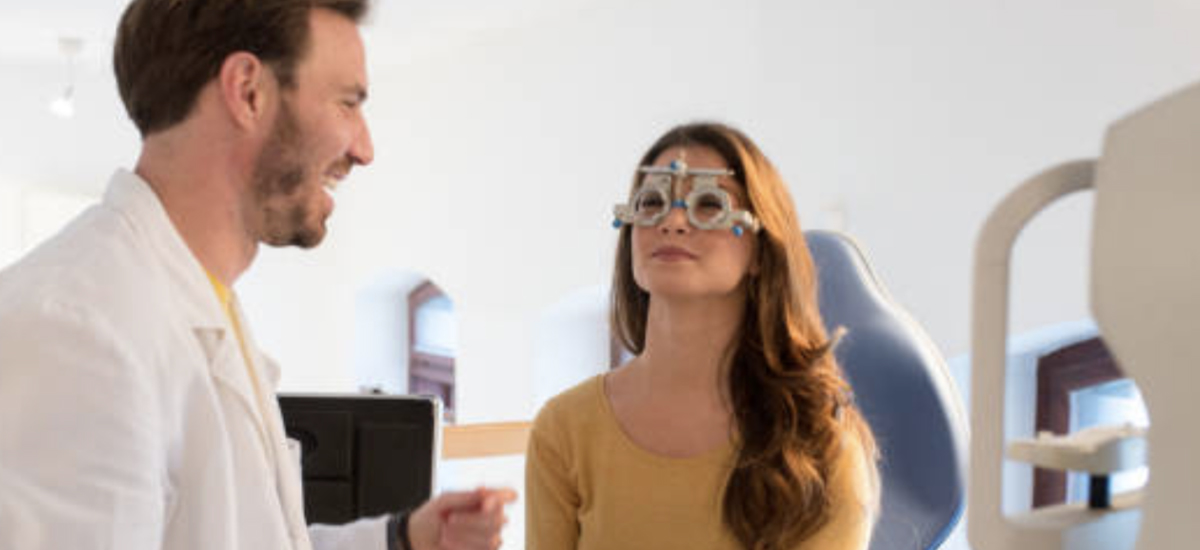How Often Does an Eye Prescription Change?

Your vision can change from childhood to adulthood, as can your eye prescription. Whether your refractive error symptoms worsen as you age, or you develop an eye disease or other problem, your eye prescription may be affected.
How often does an eye prescription change? That depends on several things, such as your eye health. Let’s discuss.
How often does an eye prescription change?
For some, an eye prescription changes every year, while for others, it can take up to three years or more. Therefore, the answer to, ‘How often does an eye prescription change?’, is that it varies.
Here's a look at how and when some conditions can affect your vision:
- Cataracts may come as early as birth or later in life, such as after an eye injury.
- If you’re going to get keratoconus, you’ll usually have symptoms by age 20. It can worsen for up to two decades before it decelerates.
- Many people are born with astigmatism, and it can get better or worse throughout your life.
- Presbyopia often affects those above age 40. Your vision may be impacted over time, requiring a new eye prescription or type of eyeglasses.
- Several eye diseases, such as age-related macular degeneration, take a while to show symptoms. Over time, this condition can lead to blindness.
- The first signs of myopia typically happen to kids starting school. The refractive error often worsens until age 20.
If you have any of these eye issues, it’s necessary to have a yearly comprehensive eye exam. The eye doctor may request to see you more often or less frequently, depending on the severity of your condition.
At every appointment, they’ll be sure to conduct a vision test to assess your visual sharpness. They may also use a slit lamp exam to peek at your eye anatomy for signs of eye diseases and other issues.
Is a sudden change in eye prescription normal?
Usually, a sudden change in eye prescription is abnormal. However, if you haven’t had your eyes checked in a while, it may feel more immediate than it is. (That’s why we suggest everyone above age 6 have an annual optical exam.)
Sometimes, abrupt vision changes are due to eye diseases. Since many eye diseases can take time to reveal symptoms to the naked eye, they can be hard to detect without a comprehensive eye exam.
Primary open-angle glaucoma, for instance, can happen over time with little symptoms. A sudden loss in peripheral (or side) vision is a sign of this condition, which requires prompt treatment. Acute angle-closure glaucoma can also happen out of nowhere, causing eye pain or red eyes. If you have this condition, you’ll need to meet with an eye doctor right away.
Summary: When will you need a new prescription for eyewear?
Your eyesight can improve or worsen during your lifetime, which necessitates regular appointments with an eye doctor near you. How often does an eye prescription change? It depends on your eyes and vision condition.
Many people with eye diseases experience sudden changes in eye prescriptions, while those with refractive errors can have symptoms from childhood, which improve later on. There’s no single answer on how often an eye prescription can change, as everyone is different, but in general, people get new eyewear every one to three years.
If you suspect a new eye prescription is in order, the best thing to do is to see an eye doctor. For Eyes has more than 110 eye care centers between the U.S. and Puerto Rico, and we’d love to see what we can do to help your eyes.
Book your eye exam at For Eyes
Have you had your annual comprehensive eye exam? Schedule an appointment with an Independent Doctor of Optometry at your local For Eyes.












